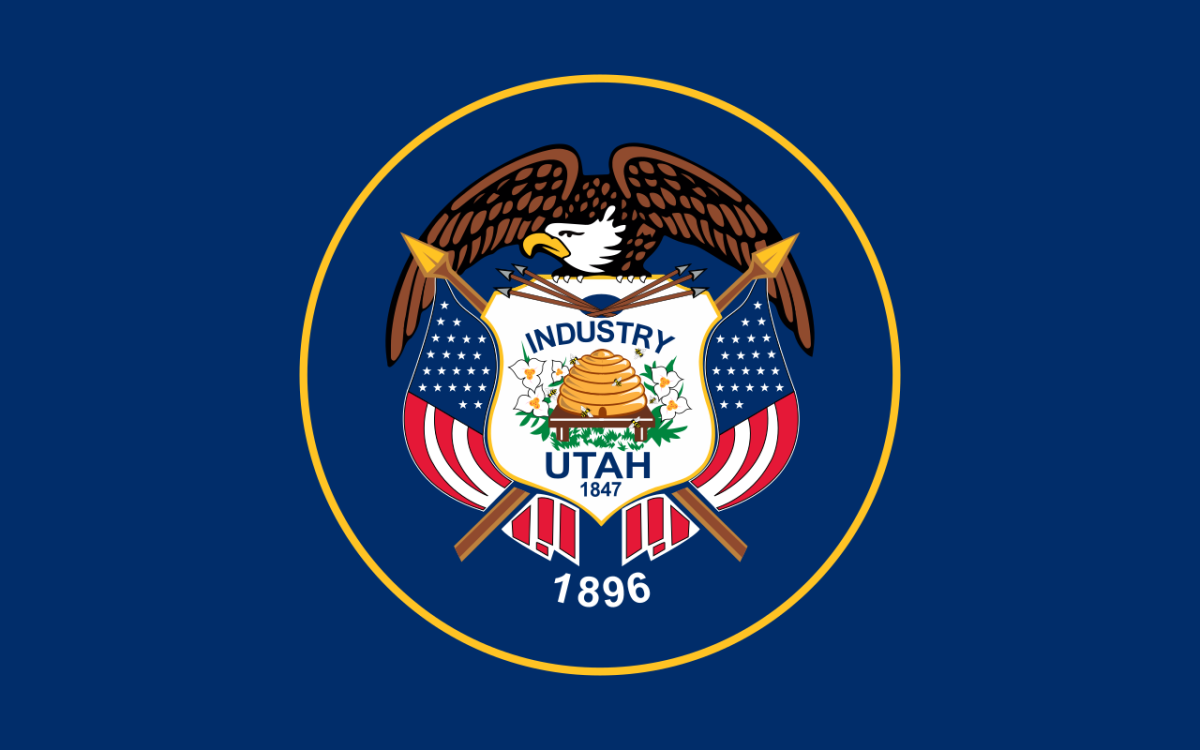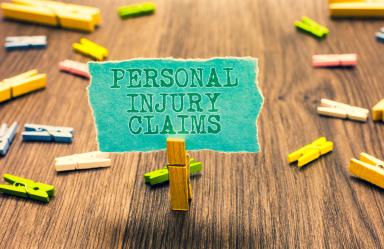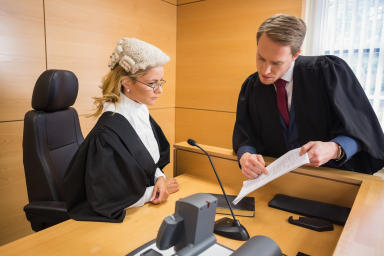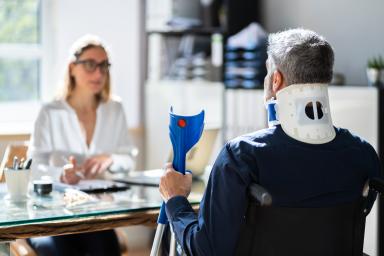Utah Personal Injury Laws

In 2022, Utah recorded 59,126 vehicular crashes and 63,377 work-related injuries. As high as those figures were, they are only a fraction of all possible instances that could lead to Utah personal injury lawsuits, which may also arise from animal bites, slips and falls, drowning, and other situations.
Nevertheless, they should remind Utahns of their vulnerability to harm and encourage them to be aware of the state’s personal injury laws. This article compiles relevant info on car accident and dog bite laws, statutes of limitations, and government and product manufacturer liabilities. Remembering these laws will help if ever you are injured in an incident caused by the negligence of others.
Vehicular Accident Laws in Utah
In 2022, the Utah Department of Public Safety recorded more than 17,000 vehicular crashes that resulted in injuries. With these figures, it is evident that accidents are unavoidable in any state or place.
Therefore, it is crucial that you not only drive safely to avoid being an accident casualty. You should also be aware of vehicular accident laws in the state. For instance, one of the most important legal principles in Utah that affects vehicular accident cases is the state's no-fault rule. It requires all drivers in the Beehive State to carry $3,000 worth of personal injury protection. This will cover expenses incurred from an accident, regardless of the at-fault driver.
If the PIP coverage is insufficient, victims may file a lawsuit seeking compensation for damages from the at-fault driver. When that happens, the modified comparative fault rule will apply (this will be elaborated on later).
Aside from the no-fault and comparative fault rules, other laws should be followed:
Drivers should stop and remain at the accident scene to fulfill responsibilities stated in the Utah Code (e.g., providing contact details to the persons involved). Otherwise, they could be guilty of a misdemeanor or felony and charged a fine.
Drivers should immediately notify a nearby law enforcement agency of the accident. The latter may remove vehicles, cargo, or property that damaged and blocked the roadway and consequently endanger the public.
Premises Liability Laws in Utah
Slips and falls, drowning, and elevator accidents are some mishaps involving premises liability, wherein owners are deemed responsible for the damages or injuries caused by their property's conditions.
Various states have laws specifying premises liability in certain situations, allowing victims to collect compensation for their injuries or damages. For instance, in Utah, one can sue for premises liability if they are injured by property conditions created by or known to the owner.
Also, the legitimacy of those lawsuits is dependent on certain conditions. For instance, the plaintiff must generally not be a trespasser as property owners are usually not responsible for them. However, if the trespasser sustained severe injuries or died, the property owner can be held liable if any of the following conditions are met:
The injured was a child, and an artificial property condition, which the child did not know was dangerous, caused their injury or death. The owner must also have been aware of the hazard and have done nothing to eliminate it.
The property owner purposely set up dangerous conditions that could cause injury or death in an area often visited by trespassers.
Injuries Caused by Dogs in Utah
It might be surprising to hear that dogs bite more than 4.5 million people annually in the U.S. But be reminded that dogs – no matter how they look – can cause harm because they have teeth. It is only preemptive that states have laws protecting their constituents from animal bites by ensuring their owners take responsibility for them. In Utah, for instance, owners are strictly liable for the injuries their dogs have caused.
However, pet owners’ liability does not extend to dogs handled by law enforcement agencies. Utah code specifies that governmental agencies or peace officers will not be responsible for the injuries their dogs cause if the following conditions are met:
The dog and its handler were trained and certified.
The agency had a policy stating the law enforcement duties of its dogs.
The dog was carefully and reasonably handled during the operation.
Other instances where owners are not liable for the injuries or deaths their dogs have caused are:
The entity was another animal that entered the owner's property without consent.
The injury or death happened on the owner's private property, and the dog was secured in a fence or another enclosure.
Injuries Caused by Government Agencies in Utah
Sometimes, injuries arise from government agencies' representatives, properties, or operations. For instance, a public road repair has unsafe conditions and no adequate warning is put into place. A person then becomes injured because of the said conditions. Determining if they can sue the government – who is in charge of the public road – is more complicated than usual personal injury cases.
The process or laws applying to government agencies' liability differ from those of civilians because of the Government Immunity Act of Utah. It protects the government and its representatives from personal injury and other lawsuits. They cannot be liable for conditions specified within the Act, usually official operations or conduct of duties.
For instance, in the case of the example provided (i.e., injury caused by unsafe road conditions), the Act states that the government and its officers or employees are not responsible for the injury if the hazardous conditions are latent or undiscovered. However, if the conditions are not latent, immunity is waived, allowing them to sue for damages or compensation.
Another way for civilians to file a claim against the government is through the Federal Tort Claims Act. This law applies across the U.S., not just to Utah. There is a process to be followed when claiming damages through the FTCA.
Understanding how to hold government entities liable can be difficult for civilians. It is ideal to consult legal experts on the matter: government liability lawyers. They can advise you on whether you can proceed with your case and what type of evidence will best support it.
Product Liability Laws in Utah
Defective items may cause injuries. For example, you buy a pair of batteries from a store. However, upon use, it explodes and burns your hand. As the batteries are new, you know that your injuries are not your fault but a result of a product defect.
Product liability laws allow people to sue and collect damages from manufacturers or retailers. However, as with other laws, the incident must meet specific conditions. For instance, the product should already have been defective and unreasonably dangerous to customers upon selling by the manufacturer. However, if the product meets government standards even with a suspected defect, the product is said to have no defects.
Also, if the product has been modified or altered after the plaintiff purchased it, that could be considered a contributing cause to the injury. Therefore, the manufacturer or seller will not be held liable for the incident, and the plaintiff cannot collect damages or compensation from them.
Medical Malpractice Laws in Utah
According to a 2019 study, one out of 20 patients could have been harmed while receiving medical care. That could result in a medical malpractice case, especially if a healthcare provider was negligent.
Should that medical malpractice case be launched in Utah, specific laws may apply.
Utah Health Care Malpractice Act
The Utah Health Care Malpractice Act specifies the statute of limitations for medical malpractice actions. It also explains that the limits are stringent to mitigate rising healthcare costs due to increasing malpractice lawsuits and claims.
That said, the statute of limitations for medical malpractice is as follows:
Aside from the statute of limitations, the Act specifies the process for filing a medical malpractice lawsuit:
The patient or plaintiff must provide a notice of intent to the defendant at least 90 days before filing the medical malpractice action;
The patient must request a prelitigation panel review within 60 days of supplying the notice of intent;
The plaintiff can file their lawsuit after the panel hears their case.
The Act previously stated that, depending on the outcome of the panel hearing, an affidavit of merit would be required from the patient. However, that affidavit was considered unconstitutional in Utah in 2019. Today, a patient no longer needs to present one.
Good Samaritan Law
Another law that may be relevant for certain medical malpractice cases is the Good Samaritan Law. Most states have one, and it protects people who respond to emergencies from liability lawsuits.
The Good Samaritan Law states that a person who provides emergency care may not be liable for damages or injuries unless they were grossly negligent. For example, if your ribs are broken by an emergency responder performing CPR, you may be unable to file an action against them or collect compensation.
Workers’ Compensation Laws in Utah
Injuries can be incurred due to or while at work; Utah recorded 52 fatal injuries related to work or occupation in 2021. However, regardless of severity, employees can collect compensation for injuries they sustain in the workplace. After all, businesses carry work compensation insurance for that purpose, as mandated by Utah law. Even short-term or part-time workers are eligible for workers' compensation.
To collect workers' compensation, employees must report their injuries or illnesses to their employers within 180 days. The latter will then claim from the insurance carrier, who will also inform the Utah Labor Commission.
If the claim is approved, these are the benefits an employee may receive:
Medical care expenses.
Indemnity to cover loss of income.
Weekly dependent compensation (only provided if the employee dies).
The exact value of the benefits varies per situation. For instance, employees who become permanently disabled due to a work-related accident may receive a higher indemnity than those temporarily injured.
Utah's Modified Comparative Negligence System for Personal Injury Lawsuits
Defendants can use Utah's modified comparative negligence principle to reduce the compensation they must pay the plaintiff. It states that plaintiffs can only collect damages if they are not 50% or more responsible for the injury.
Thus, if an individual is in a vehicular accident and the court rules that it is half their fault, they may not receive compensation from the defendant. However, if they are only 30% at fault, they may collect damages but not in full.
Plaintiffs in Utah who are entitled to damages but are partially responsible will have their compensation reduced in proportion to their fault. Returning to the example, if they are 30% at fault and are supposed to receive $100,000, they may only get $70,000. The deducted $30,000 is equivalent to their 30% fault.
Utah Business Liability Insurance Requirements
The only liability insurance required from all businesses (with employees) in Utah is workers' compensation insurance. It is no-fault insurance, so employees do not have to prove another party is responsible for the accident to collect the benefits.
There are three ways employers can provide workers' compensation insurance:
Purchase it from the Workers' Compensation Fund.
Purchase it from authorized workers' compensation insurance carriers.
Self-insure with approval from the Industrial Accidents Division.
Aside from workers' compensation insurance, businesses with vehicles could be required to purchase commercial auto insurance. The minimum required coverage is:
$25,000 for bodily injury or death of one person.
$65,000 for bodily injury or death of two or more persons.
$15,000 for property damage.
$80,000 for one accident.
Note that insurance values or policies may depend on the nature of the business.
How Much Can Someone Sue for an Injury in Utah?
In Utah, plaintiffs of personal injury lawsuits may sue for economic and non-economic damages. The former refers to quantifiable expenses, such as medical bills. Meanwhile, the latter refers to intangible concepts, such as pain or suffering.
These are some limits on how much one can sue for an injury in Utah:
$827,000 for one person or $3,329,100 for multiple persons in one occurrence for personal injuries caused by a governmental entity.
$450,000 in non-economic damages for a medical malpractice claim arising on or after May 15, 2010.
Note that some of these limits are regularly updated to account for inflation.
The Statute of Limitations in Utah
The statute of limitations refers to the period a person may file a claim or case. If one cannot file within the statute of limitations, their case may not be heard or considered valid.
For most cases of personal injury in Utah, the statute of limitations is four years. However, there are a few exemptions:
Medical malpractice: Two years after the discovery but not more than four years after the medical malpractice occurred (previously discussed in the article were further exemptions to these).
Government entities: One year after the government’s denial of a claim.
Product liability: Two years after discovering the defect or harm caused by the product.
Minors or mentally incompetent persons: The statute of limitations does not start to run until a claimant becomes an adult or regains competency.
Legal Resources for Injured Folks in Utah
Utah Legal Services
Utah Legal Services is a nonprofit that extends free legal aid to low-income Utahns. It focuses on non-criminal cases and has units that specialize in groups with special legal needs, like senior citizens, natives, and farm workers. ULS has physical offices across the state, although you can apply for help online or by phone. Application is necessary, as the office still has to assess whether you qualify for assistance based on three criteria: residency, financial status, and case specifics. If you do not qualify for their help, they recommend alternative legal services or associations on their site.
Utah State Courts
Utah State Courts is the official website of the state's judicial branch. It can connect Utahns to the Supreme Court, Court of Appeals, District Courts, and other relevant judicial offices. They can also use the site to file court forms, request recordings or transcripts, or apply for online court assistance. A compilation of free legal clinics is organized by county, so individuals will know who to approach for legal aid and advice. There are also resources for those who pursue their cases without a lawyer.
Licensed Lawyer: Referral Service from Utah State Bar
If you are having difficulty finding a lawyer to suit your needs, use the free referral service by the Utah State Bar known as Licensed Lawyer. You only have to answer a few questions to receive assistance from the site. If a lawyer has been referred to you, they might have some fees. If you want reduced costs or free service, you must answer more questions to qualify for subsidized help. You can also search for lawyers with a free initial consultation, so assess if they match your needs before hiring them.
Expertise.com StaffAuthor
Step into the world of Expertise.com, your go-to hub for credible insights. We don't take accuracy lightly around here. Our squad of expert reviewers, each a maestro in their field, has given the green light to every single article you'll find. From rigorous fact-checking to meticulous evaluations of service providers, we've got it all covered. So feel free to dive in and explore. The information you'll uncover has been stamped with the seal of approval by our top-notch experts.




